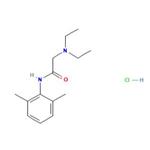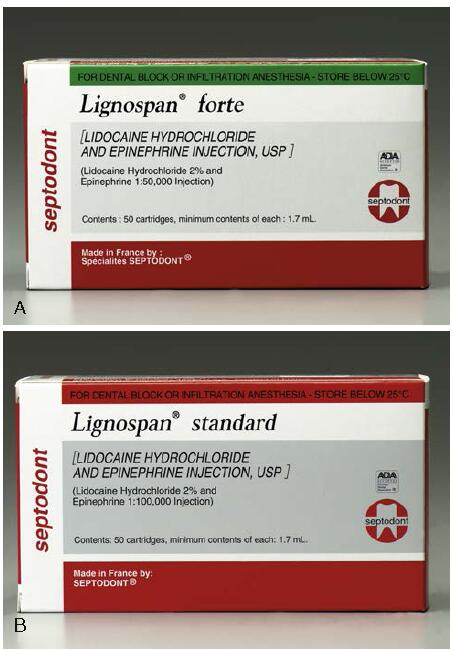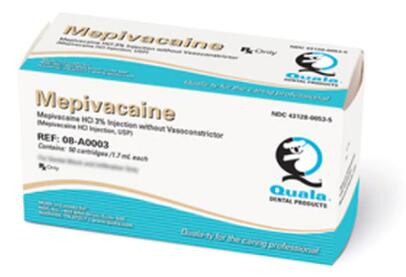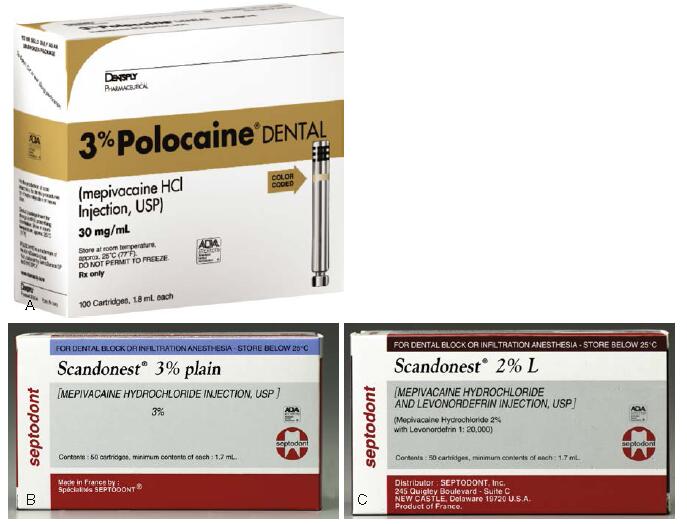What is Lidocaine hydrochloride?
Oct 10,2020
Onset of action. Rapid (3 to 5 minutes).
Effective dental concentration. 2%.
Anesthetic half-life. 1.6 hours (∼90 minutes).
Topical anesthetic action. Yes (in clinically acceptable concentrations [5%]).
Pregnancy classification. B.
Lactation: Safe
Pediatric use. It is difficult to recommend a maximum dose of any drug for pediatric patients because this varies as a function of age and weight. For patients younger than 10 years who have a normal lean body mass and normal body development, the maximum dose may be determined by the application of one of the standard pediatric drug formulas (e.g., Clark’s rule) or the patients body weight.
Maximum Recommended Dose. The FDA MRD of lidocaine with or without epinephrine is 3.2 mg/lb body weight, or 7.0 mg/kg body weight, for the adult and pediatric patient, not to exceed an absolute maximum dose of 500 mg.
Comments. Lidocaine hydrochloride was synthesized in 1943, and in 1948 became the first amide local anesthetic to be marketed in dental cartridges. Its entry into clinical practice transformed dentistry; it replaced procaine (Novocain) as the drug of choice for pain control.
Compared with procaine, lidocaine possesses a significantly more rapid onset of action (3 to 5 minutes vs. 6 to 10 minutes), produces more profound anesthesia, has a longer duration of action, and has greater potency.
Allergy to amide local anesthetics is virtually nonexistent, and true, documented, and reproducible allergic reactions are extremely rare.19-24 This is a major clinical advantage of lidocaine (and all amides) over ester-type local anesthetics. Within only a few years of its introduction, lidocaine had replaced procaine as the most widely used local anesthetic in both medicine and dentistry—a position it maintains today in most countries. Lidocaine represents the gold standard, the drug against which all new local anesthetics are compared.
In North America, lidocaine hydrochloride is available two formulations: 2% with epinephrine 1:50,000, and 2% with epinephrine 1:100,000 (Fig. 4.2). Lidocaine 2% with epinephrine 1:80,000 is available in the United Kingdom,Australia, and New Zealand. A 2% lidocaine with epinephrine 1:300,000 formulation is available in some countries (although not in North America as of February 2019); 2% lidocaine without epinephrine (2% “plain”) is no longer available in dental cartridges in North America.
Fig. (A) Lidocaine, 2%, with epinephrine 1:50,000. (B) Lidocaine with epinephrine 1:100,000. (Courtesy of Septodont, Inc., Lancaster, PA.)
Two Percent Lidocaine Hydrochloride Without a Vasoconstrictor (Lidocaine Plain)
Its vasodilating properties severely limit the duration and the depth of pulpal anesthesia (5 to 10 minutes). This vasodilatory effect leads to (1) higher blood levels of lidocaine, with an attendant increase in the risk of adverse reactions, and (2) increased perfusion in the area of drug deposition. Few clinical indications exist for the use of 2% lidocaine without a vasoconstrictor in the typical dental practice. In August 2011, 2% lidocaine without epinephrine (2% “plain”) in dental cartridges was withdrawn from the dental market in North America. It remains available in multidose vials.
Two Percent Lidocaine With Epinephrine 1:50,000
Inclusion of epinephrine produces a decrease in blood flow (perfusion), leading to decreased bleeding in the area of drug administration caused by the α-stimulating actions of epinephrine. Because of this decrease in perfusion, the local anesthetic is absorbed into the cardiovascular system more slowly (thereby remaining at the site of administration longer, hopefully near the nerve to be blocked), leading to an increase in both the depth and the duration of anesthesia: approximately 60 minutes of pulpal anesthesia and 3 to 5 hours of soft tissue anesthesia. The resultant blood level of local anesthetic is also decreased. The 1:50,000 epinephrine concentration is equal to 20 μg/ mL, or 36 μg of epinephrine per cartridge. For patients weighing more than 45 kg (100 lb), the limiting factor in determining the MRD of this local anesthetic combination is the maximum epinephrine dose of 200 μg for the healthy patient. The MRD for epinephrine-sensitive individuals (e.g., certain cardiovascularly compromised patients [ASA class 3] and clinically hyperthyroid patients [ASA class 3]) is 40 μg per appointment. This is equivalent to about one cartridge of epinephrine 1:50,000.
In the author’s opinion, the only recommended use of 2% lidocaine with a 1:50,000 epinephrine concentration is for hemostasis (a situation wherein only small volumes are infiltrated directly into the surgical site).
Two Percent Lidocaine With Epinephrine 1:100,000
Administration of 2% lidocaine with epinephrine 1:100,000 decreases blood flow into the area of injection. The duration of action is increased: approximately 60 minutes of pulpal anesthesia and 3 to 5 hours of soft tissue anesthesia . In addition to the lower blood level of lidocaine, less bleeding occurs in the area of drug administration. The epinephrine dilution is 10 μg/ mL, or 18 μg per cartridge. Epinephrine-sensitive patients (see earlier discussion for lidocaine with epinephrine 1:50,000) should be limited to two cartridges of epinephrine 1:100,000 per appointment.
The duration and depth of pulpal anesthesia attained with both lidocaine-epinephrine solutions (1:50,000 and 1:100,000) are equivalent. Each may provide approximately 60 minutes of pulpal anesthesia in normal circumstances and soft tissue anesthesia of 3 to 5 hours’ duration. Indeed, 2% lidocaine with epinephrine 1:200,000 or 1:300,000 provides the same duration of pulpal and soft tissue anesthesia, although not the same level of hemostasis.
In terms of duration and depth of anesthesia for most procedures in a typical dental patient, 2% lidocaine with epinephrine 1:100,000 is preferred to 2% lidocaine with epinephrine 1:50,000. Both formulations provide equal duration and depth, but the 1:100,000 solution contains only half as much epinephrine as the 1:50,000 solution. Although the amount of epinephrine in the 1:50,000 solution is not significant in most patients, ASA class 3 and ASA class 4 risk patients with histories of cardiovascular disorders might prove overly sensitive to these concentrations. Also, an elderly patient is likely to be more hyperresponsive to vasoconstrictors. In these individuals, a more dilute epinephrine formulation (1:100,000 or 1:200,000) should be used.
For hemostasis in procedures in which bleeding is definitely or potentially a problem, 2% lidocaine with epinephrine 1:50,000 is preferred because it decreases bleeding (during periodontal surgery) by 50% compared with a 1:100,000 epinephrine dilution. Vasoconstrictors act directly at the site of administration to decrease tissue perfusion, and the 1:50,000 solution provides excellent hemostatic action. The 1:100,000 dilution may also be used for hemostasis, but it is not as effective. Rebound vasodilation occurs with both epinephrine 1:50,000 and epinephrine 1:100,000 as the tissue concentration of epinephrine decreases. Minimum volumes of solution should be administered to provide excellent hemostasis during surgical procedures on soft tissues. The signs and symptoms of lidocaine toxicity (overdose) may be the same (central nervous system [CNS] stimulation followed by CNS depression) as those described in Chapter 2. However, the stimulatory phase may be brief or may not develop at all. Although muscle tremor and seizures commonly occur with overly high lidocaine blood levels, the first signs and symptoms of lidocaine overdose may include drowsiness, leading to loss of consciousness and respiratory arrest.
Lidocaine (2%) with epinephrine remains the most used local anesthetic formulation in the dental profession worldwide. A conservatively estimated 1 billion dental cartridges of 2% lidocaine—all formulations—are manufactured annually.
- Related articles
- Related Qustion
- Lidocaine hydrochloride for Chronic Pain Treatment Jan 25, 2024
Lidocaine hydrochloride effectively reduces non-specific chronic pain, neuropathic pain, musculoskeletal pain and improves quality of life. Further studies needed for musculoskeletal pain.
- Lidocaine hydrochloride: mechanism of action, pharmacokinetics and activities Jun 28, 2023
Lidocaine hydrochloride is a medication that works by blocking sodium channels in neuronal cell membranes, preventing the initiation and transmission of nerve impulses.
- Lidocaine Hcl: Uses, Side effects, Overdose, Interactions Sep 16, 2021
Lidocaine hydrochloride was synthesized by L?fgren and Lundquist in 1943, and was clinically introduced in 1948. It remains one of the most widely used local anaesthetics.
Mepivacaine hydrochloride [N-(2, 6-dimethylphenyl)-1-methyl 2-piperidinecarboxamide monohydrochloride] is an amino amide-type local anesthetic agent widely used to provide regional analgesia and anesthesia.....
Oct 9,2020AnestheticsPrilocaine hydrochloride (Citanest) is an amide anesthetic whose onset of action is slightly longer than that of lidocaine; its duration of action is comparable.....
Oct 12,2020AnestheticsLidocaine hydrochloride
73-78-9You may like
- Lidocaine hydrochloride: A local anesthetic
Mar 19, 2025
- What is Atracurium Besylate Injection
Apr 15, 2024
- General Introduction of Caffeine
Mar 3, 2022
Lidocaine hydrochloride manufacturers
- Lidocaine hydrochloride
-

- $31.00 / 5g
- 2025-12-16
- CAS:73-78-9
- Min. Order: 5g
- Purity: 0.99
- Supply Ability: 25kg
- lidocaine hydrochloride
-

- $5.00/ KG
- 2025-12-16
- CAS:73-78-9
- Min. Order: 1KG
- Purity: 99% hplc
- Supply Ability: 500TONS
- Lidocaine hydrochloride
-

- $1.00 / 1kg
- 2025-12-15
- CAS:73-78-9
- Min. Order: 1kg
- Purity: 99%
- Supply Ability: 10 tons







